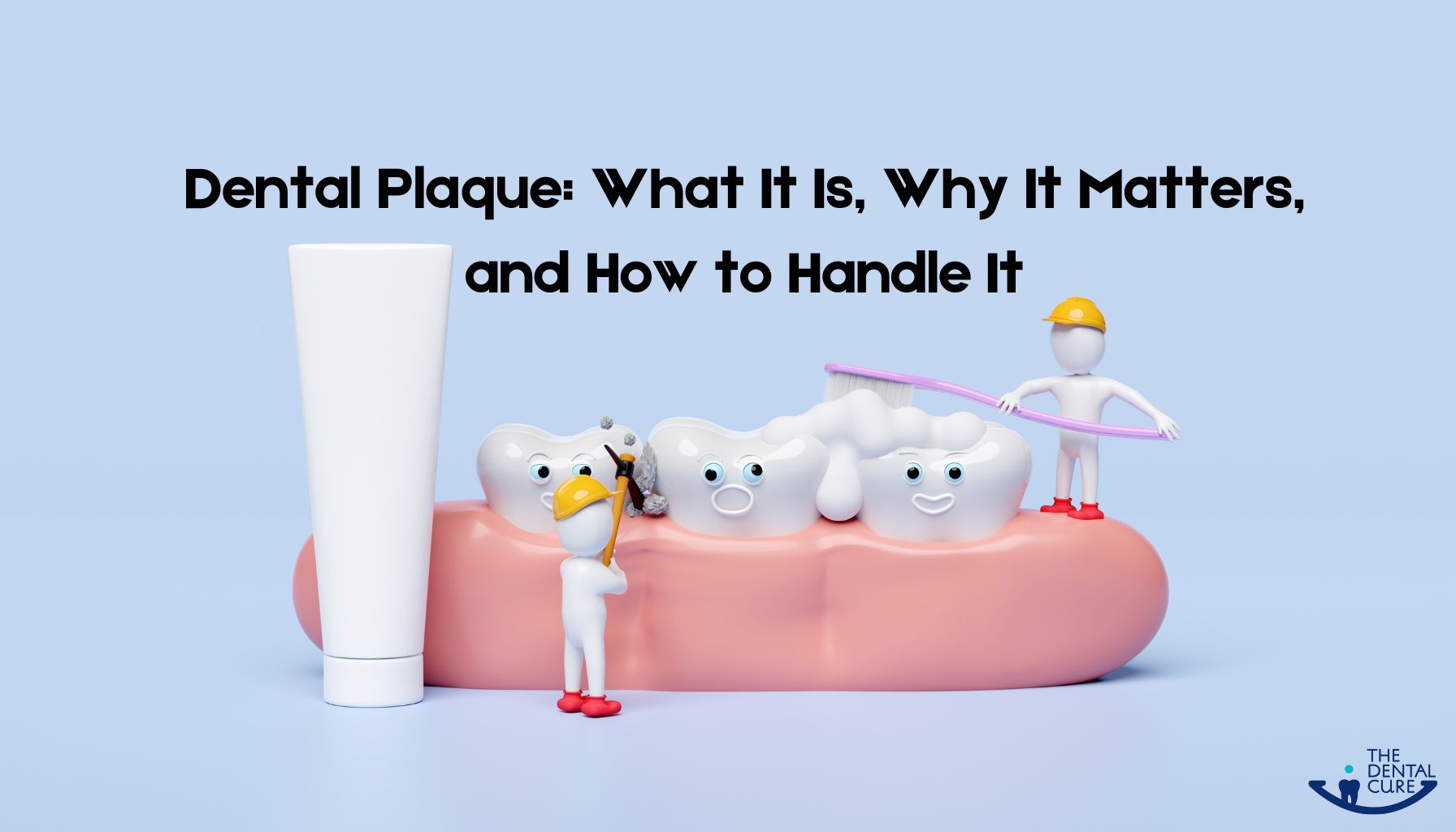
We’ve all heard about dental plaque, but not everyone knows what it really is or how much trouble it can cause. Let’s break it down into simple terms: dental plaque is that sticky, colorless layer you feel on your teeth when you haven’t brushed in a while. It’s easy to ignore, but when left unchecked, plaque can lead to much bigger problems like cavities, gum disease and even bad breath.
So, What Exactly Is Plaque?
Plaque is a soft film that forms on your teeth. It’s made up of bacteria, leftover food particles and saliva. It’s sneaky because it’s mostly invisible, but if you run your tongue over your teeth and they feel a little “fuzzy,” you’ve got plaque.
How Does Plaque Form?
It happens pretty quickly. Every time you eat or drink something sugary or starchy (think bread, candy, soda), the bacteria in your mouth get to work. These bacteria love sugars and break them down, producing acids that stick to your teeth. Over time, this forms plaque and if you don’t brush it away, it hardens into tartar, which is much tougher to remove.
Why Should You Care About Plaque?
Plaque is more than just an annoying layer on your teeth. If you don’t remove it regularly, it can lead to:
- Cavities: The acids in plaque break down your tooth enamel, which can lead to cavities. These are small holes in your teeth that only a dentist can fix.
- Gum Disease: When plaque builds up along your gum line, it can cause irritation and swelling, leading to gingivitis. If this goes untreated, it can progress to periodontitis, a serious gum disease that can cause tooth loss.
- Tartar Buildup: If plaque isn’t removed, it hardens into tartar, which is much harder to clean off. This can lead to more severe dental problems.
- Bad Breath: Plaque is a major culprit behind bad breath because bacteria release smelly compounds as they break down food.
How Can You Prevent Plaque?
Here’s the good news: plaque is totally manageable with good habits. Here’s what you can do to keep it at bay:
- Brush Your Teeth Twice a Day: Use a soft-bristled toothbrush and fluoride toothpaste. Brushing for at least two minutes helps remove plaque before it can do any damage.
- Floss Daily: Flossing gets between your teeth where your toothbrush can’t reach, removing hidden plaque and food particles.
- Use Mouthwash: An antibacterial mouthwash can help reduce the bacteria that cause plaque.
- Eat a Healthy Diet: Cutting back on sugary and starchy snacks can help reduce plaque formation. Instead, try snacking on raw veggies, cheese, or plain yogurt.
- Visit Your Dentist Regularly: Even with the best brushing and flossing habits, it’s important to get professional cleanings to remove any stubborn plaque or tartar.
What Happens if You Ignore Plaque?
If plaque is left to sit on your teeth, it will eventually turn into tartar, which can’t be removed by brushing alone. Over time, this can lead to tooth decay, gum disease and even tooth loss. Worse, gum disease has been linked to other health problems like heart disease and diabetes.
While plaque is a natural part of life, managing it is key to keeping your mouth healthy. By staying on top of your brushing, flossing, and dental checkups, you can keep plaque under control. Don’t let something so preventable turn into a bigger problem—your smile will thank you!
For More Information Visit: https://thedentalcure.com/







